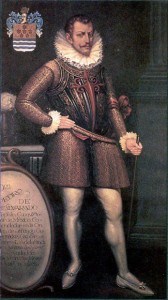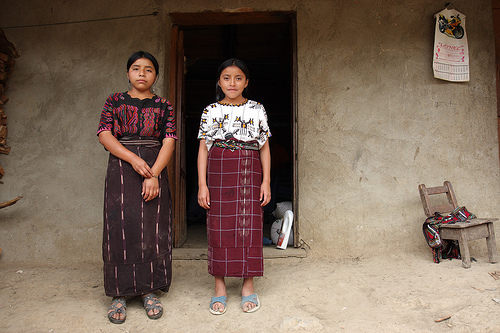This is the kind of story that I love, a story about an ordinary person doing something perfectly ordinary, digging out the last of the potatoes from the garden, say, or chasing off after a dog that’s bolted into the woods, and suddenly stumbling on something wonderfully unexpected, something almost magical, something that abruptly, almost shockingly, slides open a portal of time.
These are rare, rare events, of course. But five years ago, Lucas Asicone Ramirez, an Ixil Maya farmer who lives with his young family in the remote, highland village of Chajul in Guatemala, stumbled on just such a portal. Asicone was working on some improvements at the time in his one-room home. He started by opening up a wall, and as he stripped away layer upon layer of plaster, with fine white dust flying everywhere, he spotted something colorful underneath, something odd. It looked like part of a painted human figure.
Puzzled, Ascione removed more of the plaster, then more. Along the wall, stretching for several square feet, was a lost, ghost mural—a strangely familiar scene painted in vivid color. On the left, a former occupant had deftly painted a row of men dressed as Spanish grandees, seated on chairs, smoking pipes and playing drums. On the right, the unknown artist portrayed a man in the elaborate feathered garb of the ancient Maya nobility. The scene was at once theatrical and tragic, real and ritualized—the Spanish conquest performed as pageant.
Ascione notified the Guatemalan government of his discovery, and asked for help in preserving the mural. Eventually, researchers journeyed to remote Chajul to take a look. They pored over the mural and determined that it dated to around 1650, soon after Spanish priests began conducting mass in a new Catholic church. And not long after that date, Chajul’s priests seem to have introduced a community pageant known as Baile de la Conquista, Dance of the Conquest—the subject of Lucas Ascione’s mural.
I had never heard of Dance of the Conquest, so I began doing some research. As I soon discovered, art historian Martin Cohodas has begun documenting the history of this remarkable pageant, with the help of Maya colleagues in San Cristóbal Tototnicapán, Guatemala.
 Performed annually in San Cristóbal and in many other Maya communities, Dance of the Conquest re-enacts the Battle of El Pinar in 1524, when Maya forces suffered a devastating defeat at the hands of Spanish invaders led by Pedro de Alvarado. According to Maya legend, the Maya prince Tekum cloaked himself in a robe of brilliant quetzal feathers before leading his army into battle. In the midst of the fighting, Tekum encountered Alvarado in gleaming armour on his warhorse. Seizing the opportunity to strike, the Maya prince killed Alvarado’s horse. But as he did so, Alvarado drove an iron pike through the prince’s chest. As the Maya leader fell to the ground, his spirit helper –a quetzal—landed by his side: the bird’s blood-stained feathers became the ruby plumage of the quetzal today.
Performed annually in San Cristóbal and in many other Maya communities, Dance of the Conquest re-enacts the Battle of El Pinar in 1524, when Maya forces suffered a devastating defeat at the hands of Spanish invaders led by Pedro de Alvarado. According to Maya legend, the Maya prince Tekum cloaked himself in a robe of brilliant quetzal feathers before leading his army into battle. In the midst of the fighting, Tekum encountered Alvarado in gleaming armour on his warhorse. Seizing the opportunity to strike, the Maya prince killed Alvarado’s horse. But as he did so, Alvarado drove an iron pike through the prince’s chest. As the Maya leader fell to the ground, his spirit helper –a quetzal—landed by his side: the bird’s blood-stained feathers became the ruby plumage of the quetzal today.
The Catholic priests who created Dance of the Conquest, says Martin Cohodas, intended it as a celebration of Alvarado’s victory and the founding of Guatemala’s Catholic society. But over the centuries, Maya performers have subtly subverted the message, transforming it into a celebration of indigenous culture and a fable of resistance against oppression. The hero is no longer Alvarado: it is the Maya general and prince, Tekum.
Seven years ago, Asicone came upon a small miracle: a scene from Dance of the Conquest preserved on his kitchen wall. Since then, Asicone has done everything in his power to protect it. He has taken apart the wood-burning stove in the kitchen and reassembled it outside. He has repaired the leaking roof of his house to keep the painting dry, and asked his children and others to avoid touching it. But Guatemalan officials are in no hurry to provide funds to preserve it.
Before long, it may disappear again, this time forever.
Photos: Two Maya girls in Guatemala by themikelee, and painting of Pedro de Alvarado by Xavier Lopez Medellin, 1550.
